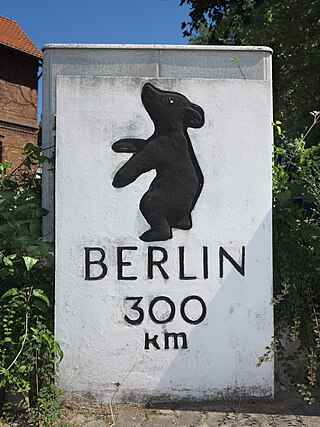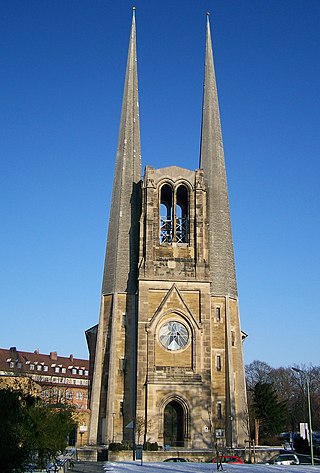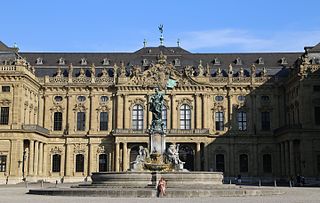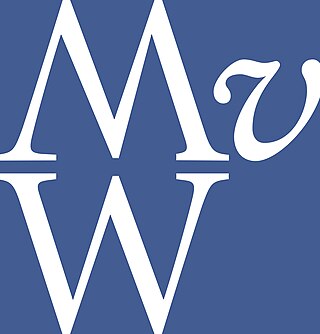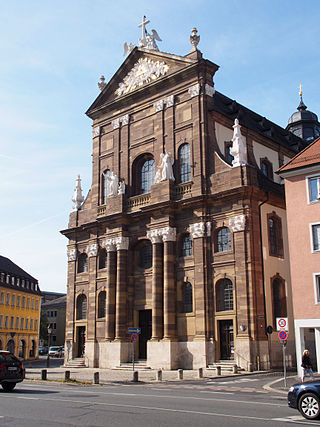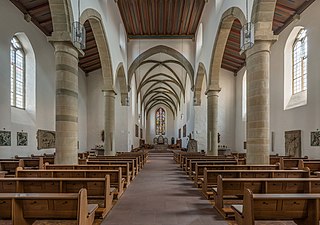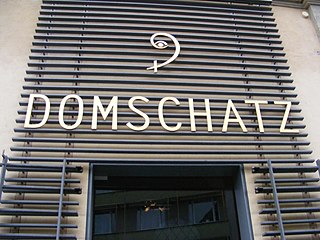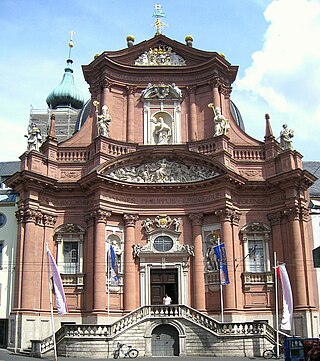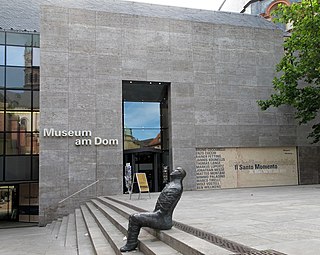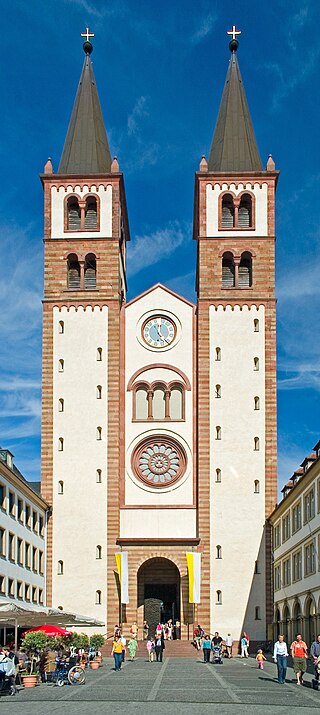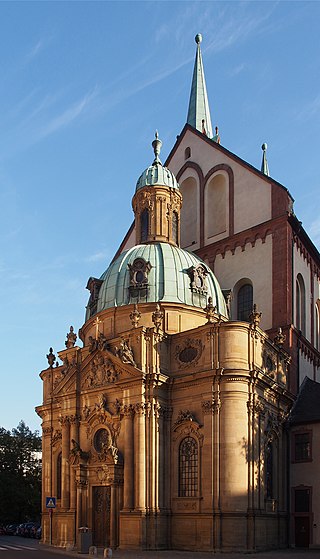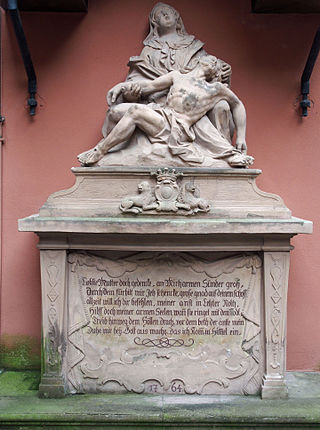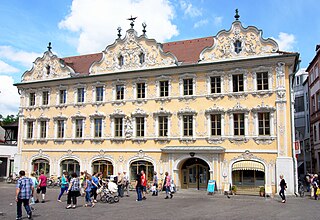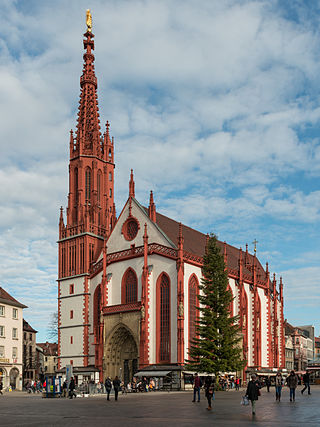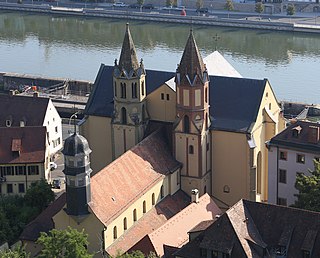Self-guided Sightseeing Tour #1 in Würzburg, Germany
Legend
Guided Free Walking Tours
Book free guided walking tours in Würzburg.
Guided Sightseeing Tours
Book guided sightseeing tours and activities in Würzburg.
Tour Facts
4.7 km
56 m
Experience Würzburg in Germany in a whole new way with our free self-guided sightseeing tour. This site not only offers you practical information and insider tips, but also a rich variety of activities and sights you shouldn't miss. Whether you love art and culture, want to explore historical sites or simply want to experience the vibrant atmosphere of a lively city - you'll find everything you need for your personal adventure here.
Activities in WürzburgIndividual Sights in WürzburgSight 1: Berliner Meilenstein
The Berlin Milestones are small monuments with mileage to the German capital Berlin. At the time of German division in the second half of 20th century, the milestones were furnished in numerous location in former West Germany. It has the Berlin Bear on it. After the German Reunification it remained as a memorial of the history of German division. Many of the monuments are located on highways and federal roads.
Sight 2: St. Johannis
The St. John's Church is the second Evangelical Lutheran parish church in Würzburg after St. Stephen's and at the same time the first to be built by the Protestant community itself. It was consecrated to John the Baptist on June 24, 1895. The church, which was rebuilt after destruction due to the war and reconsecrated in 1957, is located in Würzburg's city centre about 200 metres northeast of the Residenz at the junction of Hofstallstraße and Husarenstraße. Due to the road network, it is not exactly geostatic, but points to the northeast.
Sight 3: Staatsgalerie Würzburg
The Staatsgalerie Würzburg in the north wing of the Würzburg Residence has been showing part of the Bavarian State Painting Collections since 1974.
Sight 4: Frankoniabrunnen
The Frankonia Fountain is a monumental fountain on the Residenzplatz in Würzburg, Germany. It was created in 1894 by the architect Gabriel von Seidl and the sculptor Ferdinand von Miller in the neo-baroque style for the Prince Regent Luitpold of Bavaria.
Sight 5: Martin-von-Wagner-Museum
The Martin von Wagner Museum contains the art collection of the University of Würzburg and has been located in the south wing of the Würzburg Residence since 1963. It is among the largest university museums in Europe.
Sight 6: St. Michael
St. Michael is a Roman Catholic church in Würzburg, Germany.
Sight 7: Sankt Stephan
St. Stephan, also called Stephanskirche, has been the first longer existing Evangelical Church of Würzburg since 1803. It goes back to the monastery church of a Benedictine convention of St. Stephan, which was dissolved by secularization. A few years earlier, the old building of the monastery church was largely demolished in 1788/89 and a new building was built according to Johann Philipp Geigel plans. The old building with the associated monastery buildings goes back to 1014, namely to a former St. Peter and Paul college pencil, which was converted into a Benedictine monastery by Bishop Adalbero in 1057. After the transfer of relics of St. Stephanus, it was only named after this, while the name St. Peter and Paul was transferred to the new parish church. The monastery buildings were used profane after 1803, totally destroyed and removed in 1945. New buildings took up the government of Lower Franconia. The church was rebuilt in 1949–1955 as a flat hedged hall building, inaugurated in 1952 and is now the dean's church of Würzburg. In addition to the existing CVJM from 1963, institutions such as the Rudolf Alexander-Schröder-Haus, an Evangelical bookstore and a advice center of the Diakonie were created in addition to the existing CVJM, which made the place a Würzburg Evangelical Center.
Sight 8: Neubaukirche
The Neubaukirche is a former university church and profaned Renaissance church in Würzburg, which today serves as an auditorium for the University of Würzburg. It is considered one of the most important church buildings of the Renaissance north of the Alps. Construction began in 1583 by master builder Georg Robin and was completed in 1696 to 1704 by Antonio Petrini and Joseph Greissing, who mainly rebuilt the upper tower floors, including the dome and lantern. After severe damage in the Second World War, the new church was rebuilt between 1970 and 1985.
Sight 9: Franziskanerkirche Hl. Kreuz
The Franciscan Church is a Catholic church building in Würzburg of the Franciscan Minorite Monastery of Würzburg. The monastery church of the Franciscan Order is located in the city center between Franziskanergasse and Franziskanerplatz.
Sight 10: Alex Bukofzer
The list of Stumbling Stones in Würzburg is divided into:List of Stumbling Stones in the Old Town of Würzburg List of stumbling stones in Würzburg-Äußere Pleich List of Stumbling Stones in Würzburg-Mainviertel List of stumbling stones in Würzburg-Rennweg List of Stumbling Stones in Würzburg-Frauenland List of Stumbling Stones in Würzburg-Grombühl List of Stumbling Stones in Würzburg-Heidingsfeld List of stumbling stones in Würzburg-Rottenbauer List of Stumbling Stones in Würzburg-Sanderau List of Stumbling Stones in Würzburg-Steinbachtal List of Stumbling Stones in Würzburg-Zellerau
Wikipedia: Liste der Stolpersteine in Würzburg (DE), Website
Sight 11: Domschatz
The Würzburg Cathedral Treasure comprises valuable, artistically crafted (liturgical) objects that were used in Würzburg Cathedral from the 11th to the 20th century.
Sight 12: Neumünster
The Neumünster Collegiate church is a former collegiate church in Würzburg, Germany. The church dates back to the 11th century.
Sight 13: Museum am Dom
The Museum am Dom (MAD) is an art museum of the Diocese of Würzburg, opened in March 2003 under Bishop Paul-Werner Scheele.
Sight 14: Würzburg Cathedral
Get Ticket*Würzburg Cathedral is a Roman Catholic cathedral in Würzburg in Bavaria, Germany, dedicated to Saint Kilian. It is the seat of the Bishop of Würzburg and has served as the burial place for the Prince-Bishops of Würzburg for hundreds of years. With an overall length of 103 metres, it is the fourth largest Romanesque church building in Germany, and a masterpiece of German architecture from the Salian period. Notable later additions include work by Tilman Riemenschneider and Balthasar Neumann. The cathedral was heavily damaged by British bombs in March 1945 but rebuilt post-World War II.
Sight 15: Schönbornkapelle
The so-called Schönborn Chapel at the northern transept of Würzburg Cathedral was built from 1721 onwards, mainly by Balthasar Neumann on behalf of Johann Philipp Franz von Schönborn until 1724 (shell) and from 1731 to 1736 by Friedrich Carl von Schönborn as a burial place for the Schönborn family.
Sight 16: Lusamgärtchen
The Lusamgärtchen is a small walled courtyard formerly called Grashof at Martinstraße 4 on the north side of the Neumünster Church in Würzburg. It was originally laid out in the middle of the late Romanesque cloister of the Neumünster monastery. Within the garden is the tomb for the minstrel Walther von der Vogelweide.
Sight 17: Augustinerkloster
The Augustinian Monastery in Würzburg is a monastery of the Augustinian Order in Würzburg in Bavaria in the Diocese of Würzburg.
Sight 18: Falkenhaus
Get Ticket*The house for falcon, also called Falkenhaus, is a building on the market square in downtown Würzburg.
Sight 19: Marienkapelle
Get Ticket*The Marienkapelle is a Roman Catholic church located at the Unterer Markt of the town of Würzburg, Bavaria. It was built in the Gothic style in the 14th century. Despite its large size, it is a chapel by status, as it does not have a parish. Today it is administered by the united parishes of the Würzburg Cathedral and the Kollegiatstift Neumünster.
Sight 20: Karmelitenkloster St. Barbara
The Carmelite Monastery of St. Barbara was a monastery of the Discalced Carmelites (OCarm) in Würzburg in Bavaria in the Diocese of Würzburg.
Wikipedia: Karmelitenkloster St. Barbara (Würzburg) (DE), Website
Sight 21: Alte Mainbrücke
Get Ticket*The Old Main Bridge is the oldest bridge over the Main in Würzburg and a landmark of the city. The construction, which began in the 15th century, was Würzburg's only river crossing until 1886. The bridge, part of the East-West Passage, connects the old town on the right bank of the Main with the Marienberg Fortress opposite at kilometre 252.32 on the Main. It is used by pedestrian and bicycle traffic. With its stone figures that characterise the cityscape, the Old Main Bridge in the 18th century, like Prague's Charles Bridge, continued a tradition begun in Rome with the Angel Bridge.
Sight 22: St. Burkard
St. Burchard's Abbey was a Benedictine monastery in Würzburg, Germany, initially known as St. Andrew's Abbey. It was the first abbey established in Würzburg, founded ca. 750. In 1464, it was transformed into a Stift.
Share
How likely are you to recommend us?
Disclaimer Please be aware of your surroundings and do not enter private property. We are not liable for any damages that occur during the tours.
GPX-Download For navigation apps and GPS devices you can download the tour as a GPX file.
